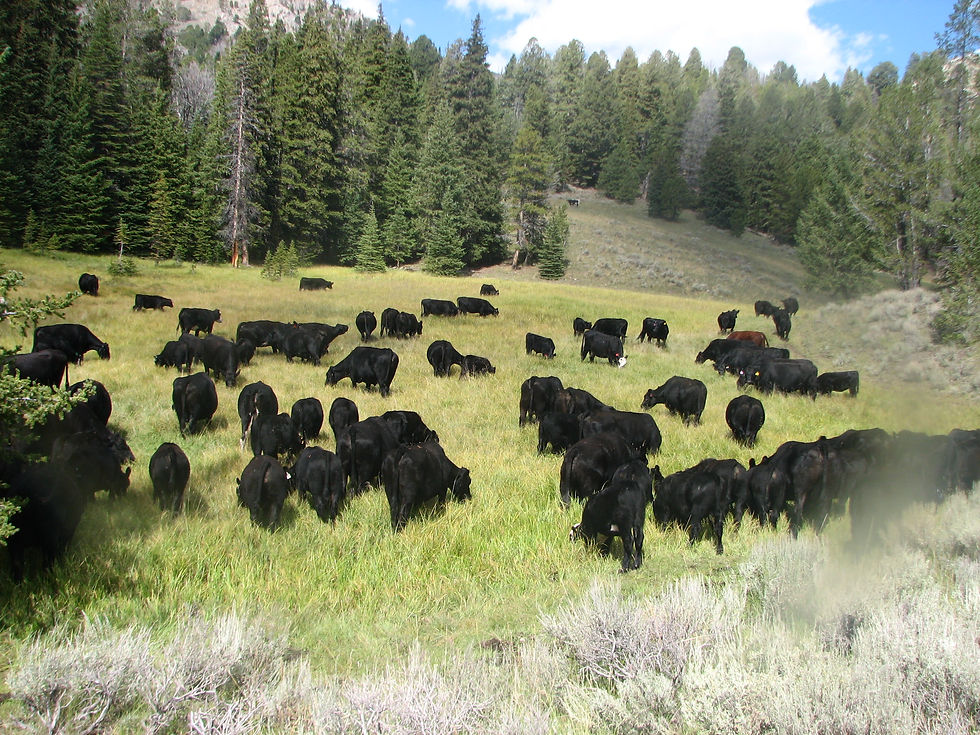
CARTER CATTLE CO.




















Carter Cattle Breeding Philosophy
We try to take a balanced approach when it comes to our breeding philosophy. It seems to be human nature to chase extremes and we see a lot of that out in the industry today, however; we realize that if our cattle are going to work for commercial cattlemen they need to be adapted to a real world environment. It’s exciting to have those individuals that are +130 for YW or +175 for $B or whatever the current fad is but we find those cattle seldom work in the real world.
The Angus breed has risen to the top of the industry because they are a breed that calves easy, produces females with great udders and mothering ability, yields a carcass that is tender and abundant in marbling and is still competitive with other breeds in terms of growth and red meat yield. All these traits are important but when you look at the traits that most affect the bottom line of the average commercial producer it is the maternal traits, especially fertility, longevity and mothering ability. For that reason our focus in bull selection is on maternal traits first and the other traits are secondary.
In the beginning paragraph I mentioned the word “balanced”. I think that is the key to producing a good cow herd. We don’t select bulls that are extreme in any one area but try to find bulls that are balanced across the board. We pay a lot of attention to phenotype so we can avoid structural issues and make sure we have an animal that can travel. Feet and legs are especially critical. We seldom use a bull that we have not seen the bull himself and several progeny as well. We have found that moderate cattle do better in a harsh environment and so we watch frame size. We also realize that in an environment where animals have a limited plane of nutrition we have to be careful not to push milk or growth to an extreme. We want to optimize not maximize.
We have found the best tool we have to shape and mold our cowherd is the use of high accuracy A.I. sires. These bulls can be used much like you would use a tool in a tool box. Sometimes you need a crescent wrench and sometimes you need a screw driver. Each tool has its own specific use and when used appropriately, it can give you the end result you are looking for. Bulls are much the same. The EPDs give us a genotypic blueprint of each individual and we can use that to move our cowherd in the direction we desire. The key is to match the right blueprint to your environment.
Another important aspect in developing a good cow herd is that they must be tested. We have a large enough land base we could probably run all our cattle under pivots on irrigated pasture if we wanted to but that would not match the environment of most of our customers. As it is, we run in really tough country, where the cows have to travel a lot and really earn their keep. It really sorts the cattle for structural issues. Also we require the cows to calve during a set calving season. Any cow that falls out of that time frame or that loses a calf will not be held over or given a second chance. Since many of these traits are very heritable over time we eliminate the genetics that won’t work in our production model.
We certainly don’t have all the answers and have made our share of mistakes but I guess that is why we enjoy the cattle business. It’s always exciting to study the bulls and mate the cows and then see the end product. I think the key is not to get sucked into all hype and keep a disciplined approach. Use high accuracy bulls and stay focused on the goal. It’s not a sprint, it’s a marathon.
I like to compare genetics to a gumball machine. If you want to increase your chance of getting a red gumball out of the dispenser you have to increase the number of red gumballs in comparison to the other colors. The higher the concentration of red gumballs, the higher the likelihood that you will get one out of the dispenser. Genetics work the same way. If we can stack generation after generation of animals with the traits we are seeking the likelihood of getting animals in successive generations with the traits we desire increases and the consistency and uniformity also improves.
Copyright 2012-2013 Carter Cattle Company Pingree , Idaho